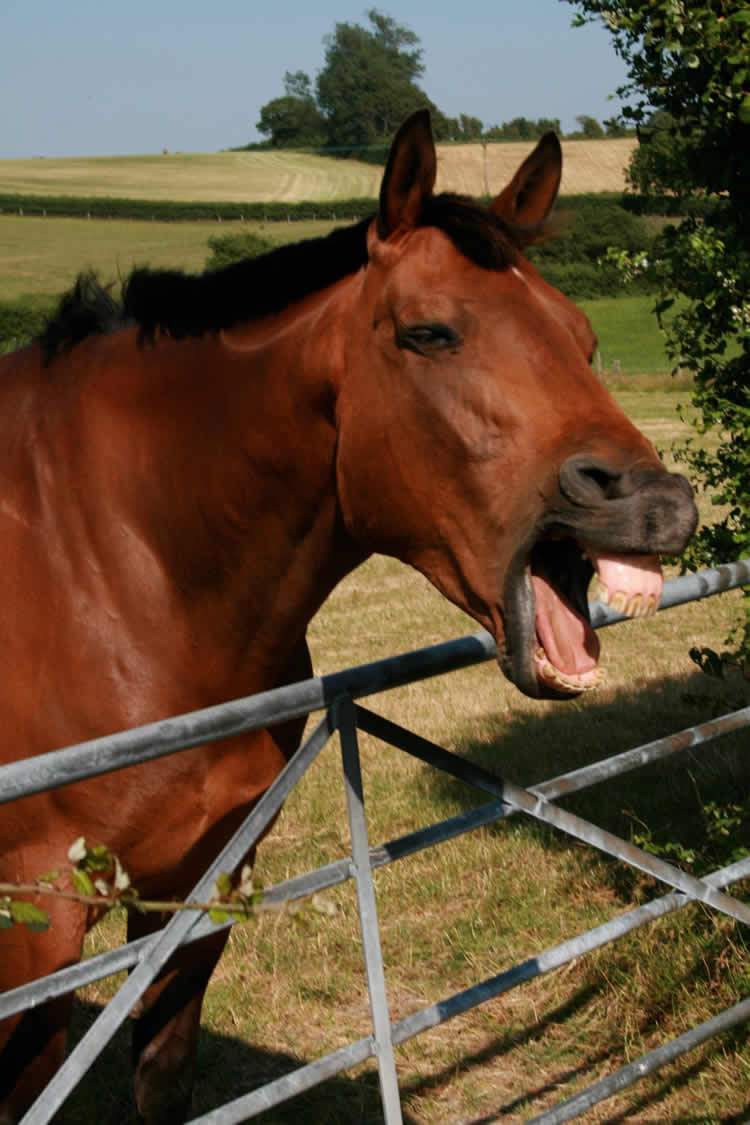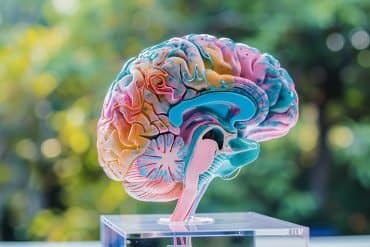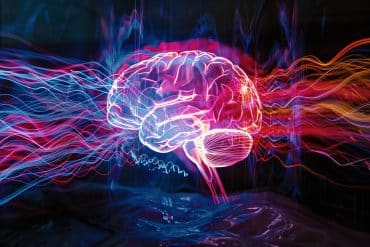Horses share some surprisingly similar facial expressions to humans and chimps, according to new University of Sussex research.
Mammal communication researchers have shown that, like humans, horses use muscles underlying various facial features – including their nostrils, lips and eyes – to alter their facial expressions in a variety of social situations.
The findings, published in PLOS ONE today, suggest evolutionary parallels in different species in how the face is used for communication.
The study builds on previous research showing that cues from the face are important for horses to communicate, by developing an objective coding system to identify different individual facial expressions on the basis of underlying muscle movement.
The Equine Facial Action Coding System (EquiFACS), as devised by the Sussex team in collaboration with researchers at the University of Portsmouth and Duquesne University, identified 17 “action units” (discrete facial movements) in horses. This compares with 27 in humans, 13 in chimps and 16 in dogs.

The study’s co-lead author, doctoral researcher Jennifer Wathan, said: “Horses are predominantly visual animals, with eyesight that’s better than domestic cats and dogs, yet their use of facial expressions has been largely overlooked. What surprised us was the rich repertoire of complex facial movements in horses, and how many of them are similar to humans.
“Despite the differences in face structure between horses and humans, we were able to identify some similar expressions in relation to movements of the lips and eyes.
“What we’ll now be looking at is how these expressions relate to emotional states.”
The researchers analysed video footage of a wide range of naturally occurring horse behaviours to identify all the different movements it is possible for horses to make with their face. They also carried out an anatomical investigation of the facial muscles that underpin these movements. Each individual facial movement that was identified was given a code.
Co-lead author Professor Karen McComb said: “It was previously thought that, in terms of other species, the further away an animal was from humans, the more rudimentary their use of facial expressions would be.
“Through the development of EquiFACS, however, it’s apparent that horses, with their complex and fluid social systems, also have an extensive range of facial movements and share many of these with humans and other animals. This contributes to a growing body of evidence suggesting that social factors have had a significant influence on the evolution of facial expression.”
She added that a systematic way of recording facial expressions would have a wide range of uses. “With EquiFACS we can now document the facial movements associated with different social and emotional contexts and thus gain insights into how horses are actually experiencing their social world. As well as enhancing our understanding of social cognition and comparative psychology, the findings should ultimately provide important information for veterinary and animal welfare practices.”
Source: Jacqui Bealing – University of Sussex
Image Credit: The image is credited to Jennifer Wathan
Original Research: Full open access research for “EquiFACS: The Equine Facial Action Coding System” by Jen Wathan, Anne M. Burrows, Bridget M. Waller, and Karen McComb in PLOS ONE. Published online August 5 2015 doi:10.1371/journal.pone.0131738
Abstract
EquiFACS: The Equine Facial Action Coding System
Although previous studies of horses have investigated their facial expressions in specific contexts, e.g. pain, until now there has been no methodology available that documents all the possible facial movements of the horse and provides a way to record all potential facial configurations. This is essential for an objective description of horse facial expressions across a range of contexts that reflect different emotional states. Facial Action Coding Systems (FACS) provide a systematic methodology of identifying and coding facial expressions on the basis of underlying facial musculature and muscle movement. FACS are anatomically based and document all possible facial movements rather than a configuration of movements associated with a particular situation. Consequently, FACS can be applied as a tool for a wide range of research questions. We developed FACS for the domestic horse (Equus caballus) through anatomical investigation of the underlying musculature and subsequent analysis of naturally occurring behaviour captured on high quality video. Discrete facial movements were identified and described in terms of the underlying muscle contractions, in correspondence with previous FACS systems. The reliability of others to be able to learn this system (EquiFACS) and consistently code behavioural sequences was high—and this included people with no previous experience of horses. A wide range of facial movements were identified, including many that are also seen in primates and other domestic animals (dogs and cats). EquiFACS provides a method that can now be used to document the facial movements associated with different social contexts and thus to address questions relevant to understanding social cognition and comparative psychology, as well as informing current veterinary and animal welfare practices.
“EquiFACS: The Equine Facial Action Coding System” by Jen Wathan, Anne M. Burrows, Bridget M. Waller, and Karen McComb in PLOS ONE. Published online August 5 2015 doi:10.1371/journal.pone.0131738






